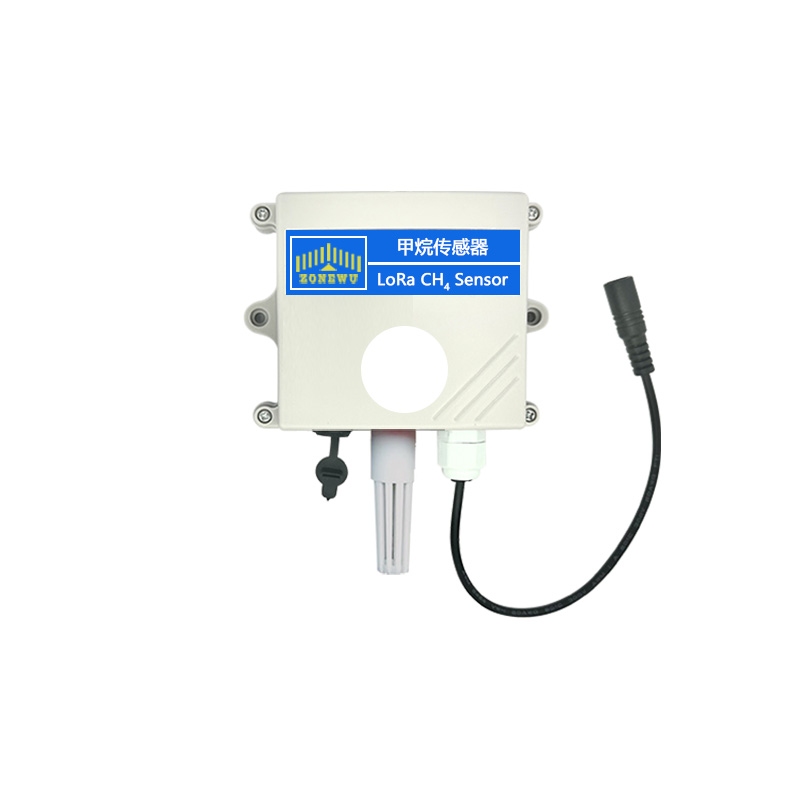Methane (CH4) is a colorless and odorless combustible gas that is both an important energy source (the main component of natural gas) and a potent greenhouse gas. Methane leakage may cause explosions, poisoning, or exacerbate climate change in industrial production, coal mining, landfill, and agricultural activities. Therefore, methane sensors have become a key tool for monitoring and controlling methane concentration.

1.The Importance of Methane Sensors: Dual Protection of Safety and Environmental Protection
When the concentration of methane in the air reaches 5% -15%, it may cause an explosion when exposed to an open flame; Meanwhile, the global warming potential (GWP) of methane is 25 times that of carbon dioxide on a 20-year scale. Therefore, the core functions of methane sensors include:
2. Working principle of methane sensor: how to accurately "sniff" danger?
The core technology of methane sensors relies on gas detection principles, and common types include:
(1) Catalytic combustion sensor
Principle: Methane burns under the action of a catalyst, causing a change in sensor resistance, which is converted into an electrical signal.
Advantages: Low cost, fast response, suitable for explosive environments.
Disadvantages: susceptible to sulfide and silicon vapor poisoning.
(2) Infrared Absorption Sensor (NDIR)
Principle: Methane molecules absorb specific wavelengths of infrared light and calculate concentration through intensity attenuation.
Advantages: High precision, long lifespan, and no interference from other gases.
Disadvantages: High cost, suitable for fixed monitoring.
(3) Semiconductor sensor
Principle: Methane adsorbs onto the surface of semiconductors, altering their conductivity.
Advantages: Small size, low power consumption, suitable for portable devices.
Disadvantage: Easily affected by temperature and humidity, requiring regular calibration.
Choosing the appropriate sensor type is crucial in different scenarios.
3. Core application scenarios of methane sensors
Methane sensors are widely used in the following fields:
(1) Oil and gas industry
Monitor methane leaks in pipelines, storage tanks, and drilling platforms to prevent fires and explosions.
(2) Coal mine safety
Coal mine gas (mainly composed of methane) is the main cause of mining accidents, and sensors can provide real-time warning.
(3) Landfills and sewage treatment plants
Garbage decomposition produces methane, and sensors assist in recycling or controlling emissions.
(4) Smart Home and Gas Alarm
Household natural gas leak detection, linked with smart home automatic valve closure.
(5) Agriculture and Animal Husbandry
Monitor the methane produced by fermentation of rice paddies and livestock manure, and optimize emission reduction measures.
4. Technological breakthroughs and development trends of methane sensors
In recent years, methane sensor technology has been continuously upgraded, and the main trends include:
(1) Higher sensitivity and selectivity
New nanomaterials such as graphene and MOFs have raised the detection limit to the ppb level.
(2) Low power consumption and wireless transmission
The Internet of Things (IoT) technology enables sensors to be remotely monitored, making it suitable for remote oil fields or pipelines.
(3) Artificial Intelligence and Big Data Analysis
AI algorithms can predict leakage risks, such as Google partnering with environmental organizations to monitor global methane emissions using satellites and AI.
(4) Miniaturization and Low Cost
MEMS (Micro Electro Mechanical Systems) technology is driving the development of portable and wearable methane detection devices.
5. Future prospects: The role of methane sensors in the era of carbon neutrality
With the global emphasis on reducing methane emissions (such as the Global Methane Commitment), methane sensors will face greater demand:
Policy driven: Countries strengthen methane regulation to drive sensor market growth (expected to reach $2 billion by 2030).
New energy applications: With the rise of the hydrogen energy industry, methane sensors can be adapted to meet the demand for hydrogen detection.
Space exploration: NASA uses methane sensors to explore signs of life on Mars.
In the future, smarter and more accurate methane sensors will become the core tools for safety, environmental protection, and energy management.